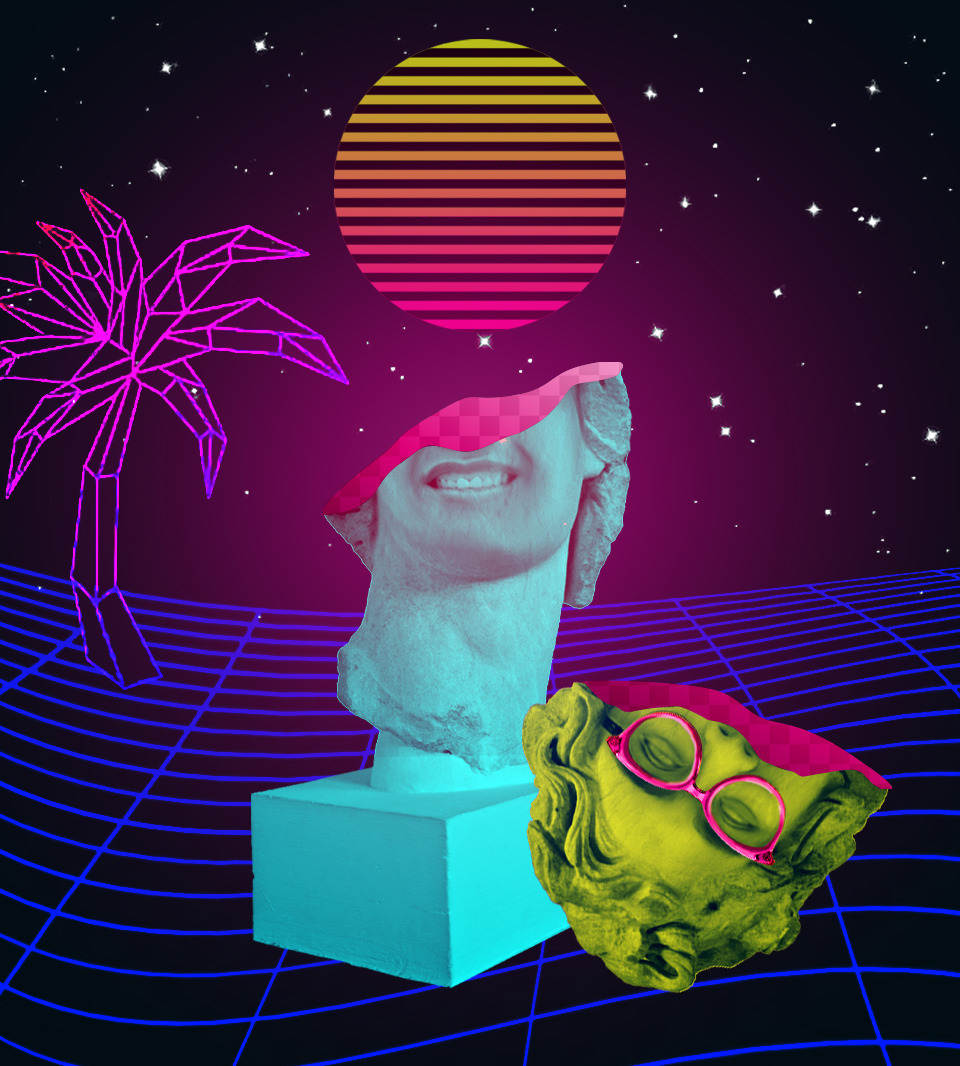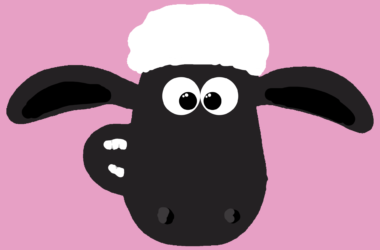Sounds and images from the era of Windows 95 and peak mall culture manipulated to a degree that is both recognizable of its past roots yet remarkably separate from its source material; this is the spirit of the internet-born subculture, vaporwave. The aesthetics of vaporwave revolve mainly around the popular technologies and media from the late 70s to the early 00s. The genre allows for an anti-consumerist or a nostalgic interpretation of its music through its distortion, which makes it worth a listen. Here are some albums from four subgenres of vaporwave that capture different aspects of their ‘aesthetic.’
Greek Busts and Dolphins – Classic Vaporwave
Floral Shoppe – Macintosh Plus (2011), Chuck Person – Eccojams Vol. 1 (2010)
Eccojams Vol. 1 (2010) by Chuck Person (a pseudonym of American experimental musician Daniel Lopatin) is allegedly the first vaporwave album. The ‘ecco’ is a double entendre on two aspects of the album that play a defining role in the vaporwave aesthetic: The echo effect that comes from the glitching of 80s mainstream pop songs, and the use of “Ecco the Dolphin,” a video game character from the 90s, who is featured in the album’s surrealist cover art.
Eccojams became a major influence for 2011’s Floral Shoppe by Macintosh Plus, the alias of American music producer Ramona Xavier. This album would eventually popularize vaporwave, with the track “Lisa Frank 420 / Modern Computing,” becoming arguably the most well-known song of the genre. Chuck Person is not completely forgotten in this iconic album with Xavier including the song, ‘Chill Divin’ with ECCO’, an homage to Eccojams and the aforementioned dolphin.
Sailor Moon and Japanese Pop – Future funk
MACROSS 82-99 – SAILORWAVE (2013)
Future funk is the most accessible strain of vaporwave. With heavy influences from 80s Japanese city pop, future funk follows the vaporwave’s nostalgic aesthetic and critique of consumerism from material derided as cheesy and commercial in its time. 2013’s Sailorwave by Macross 82-99, a pseudonym for a Mexican producer known only by their first name, ‘Gerald,’ is a staple of the subgenre, with tracks filled with catchy melodies at a high tempo. Furthermore, the title Sailorwave references the iconic anime character Sailor Moon, emphasizing vaporwave’s fixation of the era.
Department Stores and Food Courts – Mall Soft
Cat System Corp – Palm Mall (2014), North Shore Memory Gardens – The Orchards (2019)
Focussing on the mall as a defining symbol of consumerism emblematic of the past, mall soft contrasts the energetic nature of future funk. The most well-known album from this subgenre is 2014’s Palm Mall by Dutch vaporwave producer Jornt Elzinga under the alias Cat System Corp. The main piece is its opening 22-minute track, ‘Palm Mall’, which simulates a walk through a mall complete with samples of announcements from department stores and faint conversations to emulate passersby. A more recent addition is The Orchards by North Shore Memory Gardens. The Orchards also samples sound elements of a mall, such as arcade noises and people talking, but forgoes simulation for a more casual electronic and jazz sound; this distances it from the ‘background music’ feel found within Palm Mall.
Commercials and Weather Channels – Signalwave / Broken Transmission
New Dreams Unlimited – Fuji Grid TV EX (2011), Blizzard 96 – Blizzard 96 (2019)
Probably one of the most abstract subgenres of vaporwave, Broken Transmission is characterized by the splicing of random and often contrasting samples from retro television—breaking each other’s ‘transmission’—to create the sound that comes from flipping through channels on a television. The hallmark album of this subgenre is Fuji Grid TV EX from 2011, a project by pioneering producer Ramona Xavier under the pseudonym New Dreams Unlimited. Xavier leans into the anti-consumerist philosophy through the album’s heavy use of jarring and haunting distortion of ad tunes that are continuously spliced together. The final product emulates the feeling of an uninterrupted bombardment of commercials. Another approach to Broken Transmission is Blizzard 96’s self-titled project released last year. This album slows down and distorts recordings from the Weather Channel during a monumental blizzard that affected the Northeast in January 1996. As explained in the artist’s bandcamp, this album represents a special childhood memory that can be captured as nostalgia through the distortions of vaporwave.








